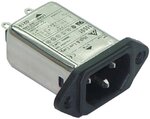itznaidu
Newbie level 6
Hi,
Recently I build a project to control the devices at my home using an IR Remote (RC5 protocol and TSOP)
I used a 230V spst relay with a 5v coil.
I connected the coil to the controller data pin through ULN2003a.
I was successfully able to switch on and off all the devices (Fan, bulb, tube light, TV).
But there is this one tube light which bugs me. When I switch on this tube light through the relay, I get mixed results.
Sometimes, other relays turn on, on their own.
Controller will stop responding (after I reset the controller it starts working again)
and this happens very often but not always.
I first thought that there is a problem with the relay board and disconnected all other devices and connected only this tubelight.
Then I realized the other relays were getting triggered because, this particular tube light was making the controller would make the other pins also high and stop the controller to respond.
I used a opto coupler between the relay and port pin of the controller. still the same result.
FYI- the controller and the relay is given power supply from a 12v adapter.
My assumption is that, since only this electrical device (tubelight) is giving problems, there must be something wrong with the tubelight and not my circuit.
help me on this..
Recently I build a project to control the devices at my home using an IR Remote (RC5 protocol and TSOP)
I used a 230V spst relay with a 5v coil.
I connected the coil to the controller data pin through ULN2003a.
I was successfully able to switch on and off all the devices (Fan, bulb, tube light, TV).
But there is this one tube light which bugs me. When I switch on this tube light through the relay, I get mixed results.
Sometimes, other relays turn on, on their own.
Controller will stop responding (after I reset the controller it starts working again)
and this happens very often but not always.
I first thought that there is a problem with the relay board and disconnected all other devices and connected only this tubelight.
Then I realized the other relays were getting triggered because, this particular tube light was making the controller would make the other pins also high and stop the controller to respond.
I used a opto coupler between the relay and port pin of the controller. still the same result.
FYI- the controller and the relay is given power supply from a 12v adapter.
My assumption is that, since only this electrical device (tubelight) is giving problems, there must be something wrong with the tubelight and not my circuit.
help me on this..
